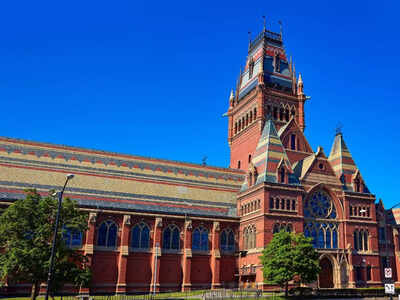Alberta teachers’ strike ends by decree: Will the notwithstanding clause bill unleash a wider union backlash?

Alberta’s legislature turned into a battleground in the dead of night. At 2 a.m. on October 28, after six and a half hours of throttled debate, Premier Danielle Smith’s government rammed through back-to-work legislation that will force 51,000 striking teachers back into classrooms after 3 weeks. TheCanadian Press reports the bill (Back to School Act or Bill 2) was passed using the notwithstanding clause of the Charter of Rights and Freedoms — the constitutional ‘override’ normally reserved for moments of political last resort. Smith’s United Conservative caucus used its majority to curtail discussion, passing procedural rules that capped debate to one hour per stage. The bill barrelled through three readings before most Albertans even woke up.Inside the chamber, the tone was electric and bitter. Teachers and supporters packed into the gallery, and the room erupted with shouts of “Shame!” when Finance Minister Nate Horner introduced the legislation late Monday, and again when the final vote pushed it across the line in the early hours of Tuesday, reports TheCanadian Press. The bill overrides the right to strike and shields itself from court challenges for up to five years — a power the province has rarely dared to deploy.Education Minister Demetrios Nicolaides defended the move, calling it an “undeniable moral imperative” to stop the now three-week-long walkout that he argued was harming students’ social and academic development. The Canadian Press quotes him saying, “This strike has moved beyond the state of inconvenience.” Meanwhile, Smith wasn’t in the chamber for the passage. She had already boarded a plane to Saudi Arabia on a trade mission hours earlier, multiple reports note.The Opposition NDP voted against the bill, calling the use of the notwithstanding clause an authoritarian abuse of power by a government that professes to honour freedom and liberty.This isn’t a routine labour dispute. The strike began October 6 after talks collapsed over the Alberta Teachers’ Association’s (ATA) push to cap class sizes and address crushing classroom complexity. That fight left 75,000 students out of school, parents scrambling, and the government cornered. But instead of negotiating, the province reached for the hammer.Students are slated to be back in class on Wednesday. The strike may be over by statute—but the fight over rights, bargaining power and precedent has only begun.Why Alberta used the notwithstanding clauseThe notwithstanding clause, found in Section 33 of the Charter of Rights and Freedoms, lets a provincial or federal legislature say: even if this law limits certain Charter rights (freedom of expression, association, etc., in sections 2 and 7–15), the law will still operate. The override lasts up to five years and can be renewed. To use it, a government must state it expressly in the legislation. Since 2015, after the Supreme Court’s ruling in Saskatchewan Federation of Labour v. Saskatchewan, the right to strike is protected under the Charter’s guarantee of freedom of association (s. 2(d)). That means a routine back-to-work law—without an override—can be challenged in court. Unions can seek an injunction to pause enforcement while judges decide if the law violates Charter rights.By including the notwithstanding clause in the bill, the government has pre-empted Charter litigation for the duration of the override (5 years):
- Courts cannot strike down or suspend the law on Charter grounds while Section 33 is in force.
- No Charter-based injunction can pause the return-to-work order.
- The strike ends on the government’s timeline, not the court’s.
What this means for Alberta’s teachers
Teachers will be back in front of students this week, but the end of the strike does not signal a resolution to the underlying dispute. The Back to School Act does not reflect a negotiated compromise, it legislates the government’s last offer into force. In practical terms, the classroom doors reopen — while the tensions that closed them remain.Under the imposed agreement, teachers will work within a 12 percent salary increase spread over four years, alongside a government pledge to hire 3,000 new teachers and 1,500 additional educational assistants. These measures were designed to address staffing pressure, but they do not include enforceable limits on class size or classroom complexity — the core issues that drove educators to strike on October 6.The contract is now binding, and so is the constraint it carries. With the notwithstanding clause invoked, the teachers’ union loses access to its most powerful bargaining tool: The ability to walk out.Under the bill, non-compliance could be costly: individual teachers could be fined up to $500 per day, while the Alberta Teachers’ Association could face $500,000 per day.Teachers will return to work under conditions they protested, without the legal leverage to push for improvements in the near term. The salary grid will move; the classrooms will not immediately change. And while support staff hiring may eventually alter workloads, those benefits will arrive slowly, school by school.
What next?
The strike may be over; the story isn’t. The centre of gravity now shifts from picket lines to a broader labour calculus. According to The Canadian Press, Gil McGowan, president of the Alberta Federation of Labour and point person for the Common Front, said unions are “looking at all options, including a strike.” He added they’ll meet Tuesday to align with affiliates and announce a plan on Wednesday, with one blunt promise: “If the government puts a gun to the head of the teachers, and they’re not able to continue their strike, then we in the broader labour movement will stand where they’re not able to.” That isn’t bluster; it’s an opening bid.Inside the profession, the mood is equal parts injured and resolute. According to CTV News, Jason Schilling, president of the Alberta Teachers’ Association, called the law a “travesty to our democracy.” His warning is stark: “This is a sad day for teachers. This is a sad day for Albertans to have a government that is willing to trample on your Charter Rights for their own purposes… We’re on a slippery slope.” Schilling says the ATA is already in talks with lawyers on next steps, reports CTV News. Translation: Law will be followed, classrooms will reopen, but the litigation, lobbying and long-game organising begin now.If the legislated return was the state flexing muscle, the next phase is about endurance—who can hold a coalition, carry public opinion, and impose a political price. Alberta has won the night; the labour movement is contesting the morning.






